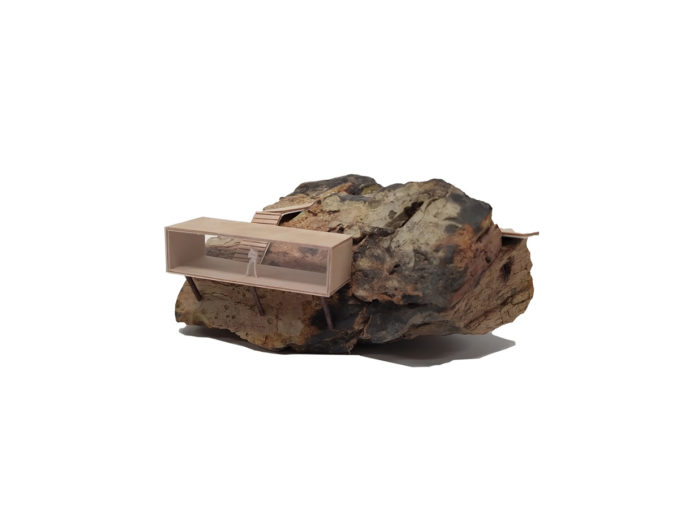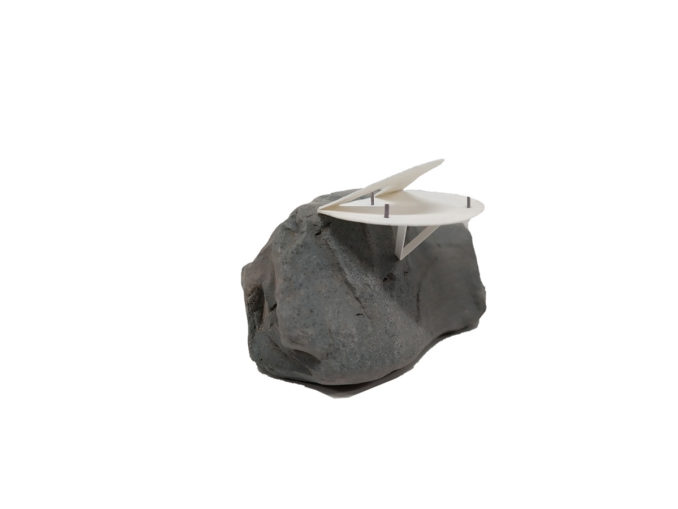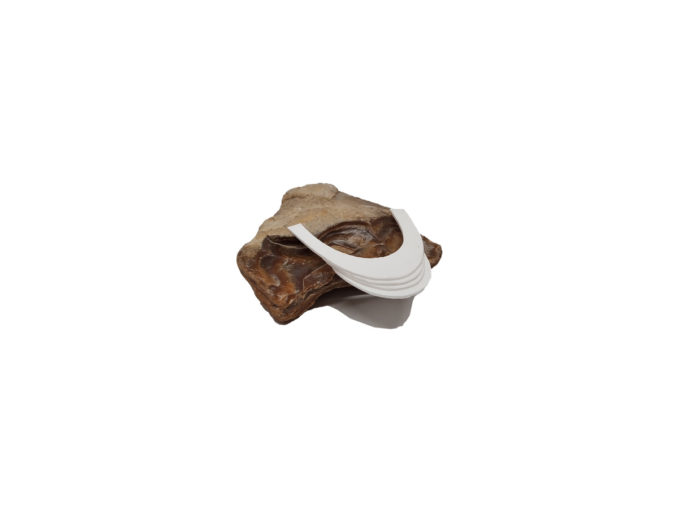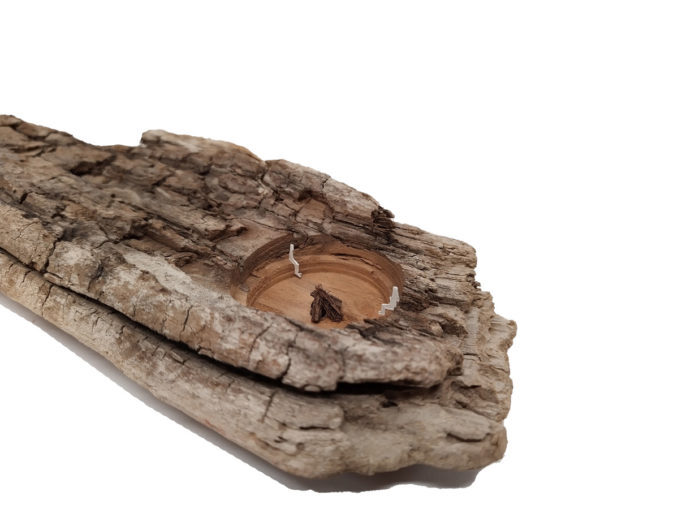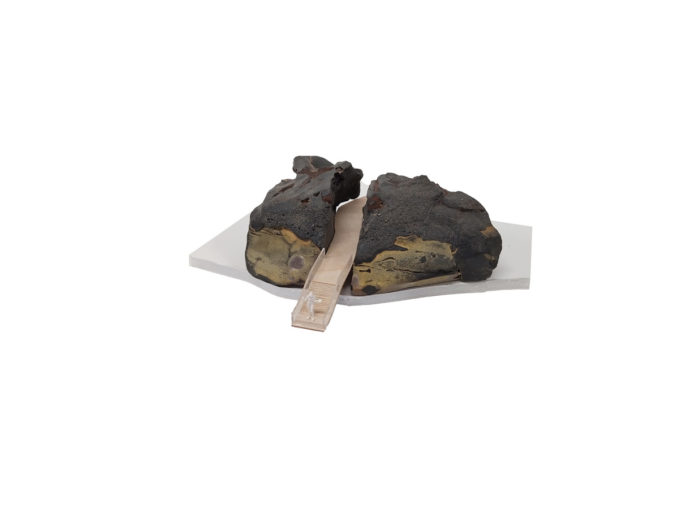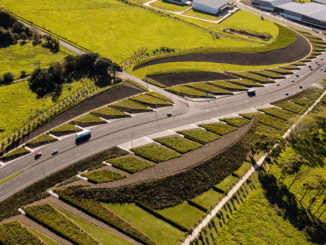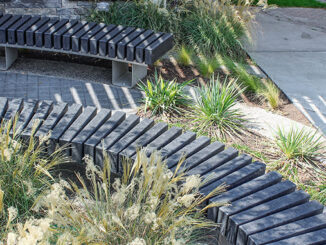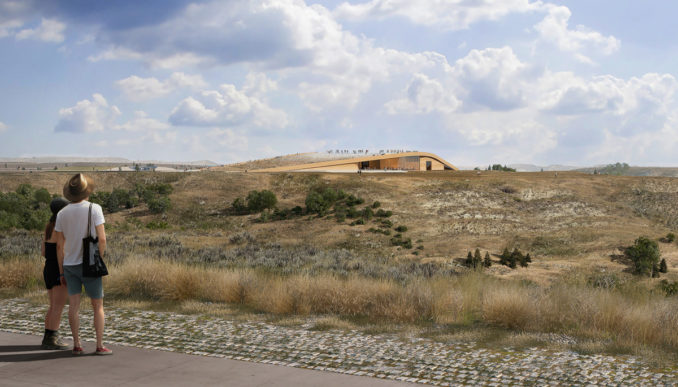
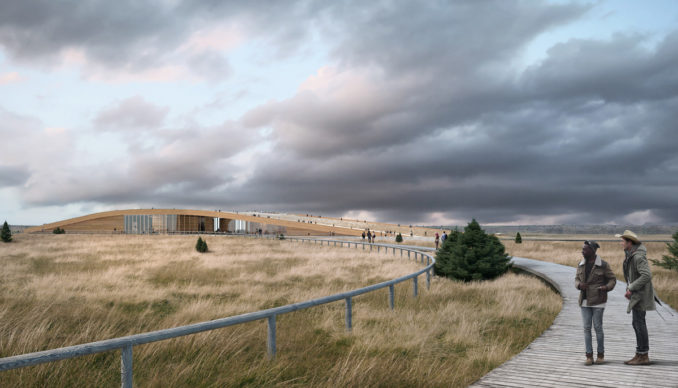
Snøhetta’s design for the Theodore Roosevelt Presidential Library is informed by the President’s personal reflections on the landscape, his commitment to environmental stewardship, and the periods of quiet introspection and civic engagement that marked his life. The design of the Library is more than a building; it is a journey through a preserved landscape of diverse habitats, punctuated with small pavilions providing spaces for reflection and activity. The Library’s gently sloping roof looks to the northeast, gazing over the National Park, historical settings in the Little Missouri River valley, and the location of Roosevelt’s Elkhorn Ranch far in the distance. The vista is a call to action, connecting today’s visitor to Roosevelt’s legacy.
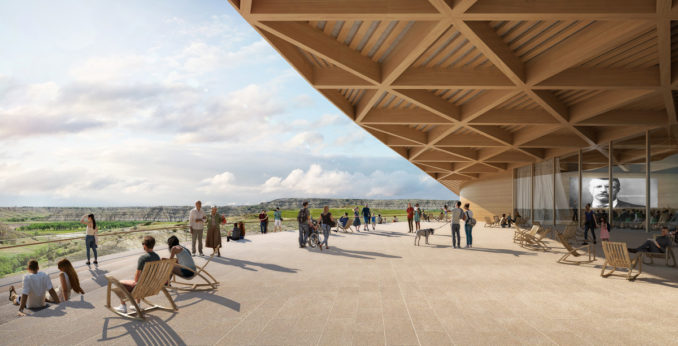
The Theodore Roosevelt Presidential Library is the landscape. The main library building rises from the butte, echoing the landforms of the surrounding Badlands. Visitors can ascend the accessible rooftop to discover commanding views of the National Park and Medora during the day, as well as an ideal location for stargazing at night. Inside the Library, large windows highlight views to historically significant landscapes and complement the rhythm of the interactive exhibitions within. A generous, covered porch overlooks the nearby valleys and can be used for gatherings throughout the year.
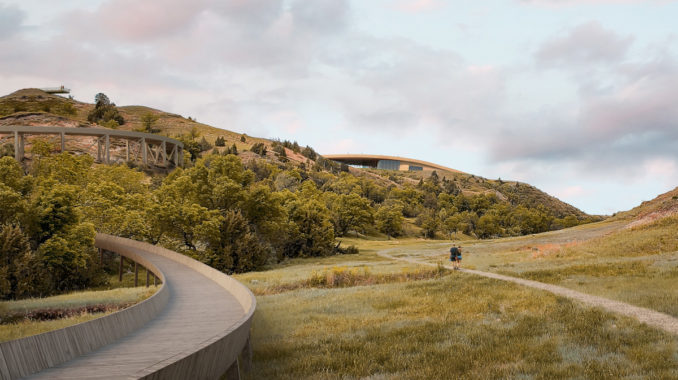
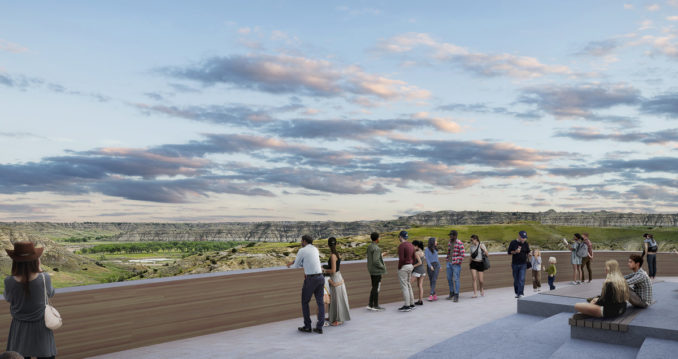
The building’s location at the northeast edge of the butte preserves the landscape for conservation research while offering a setting for educational walks, leisure, and recreation. As visitors set out on the Library loop, they will encounter adventurous paths which connect to the nearby Maah Daah Hey Trail as well as several small pavilions. Ranging from contemplative nooks to expansive vistas, these pavilions invite visitors to experience Roosevelt’s trials and triumphs in dialogue with the landscapes that shaped him. The Library is understood to be the buildings, pavilions, paths and landscape.
The design functions in harmony with the unique ecology of the region and expresses the conservation ethos for which Roosevelt is remembered. Its construction will use locally sourced and renewable materials, while its sophisticated energy systems will set a new standard for sustainable design in the region. The design also mitigates the impact of wind and other climatic factors so that the Library will be accessible in all seasons.
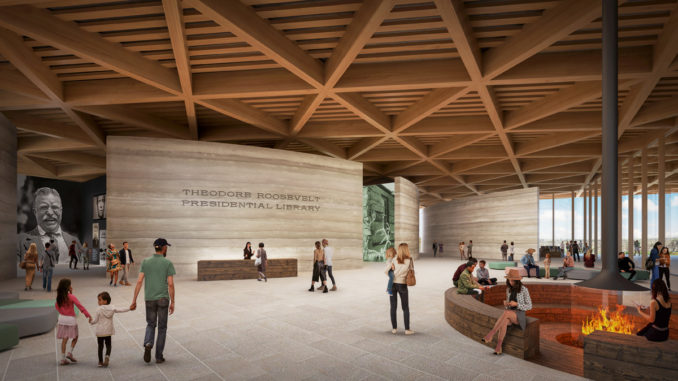
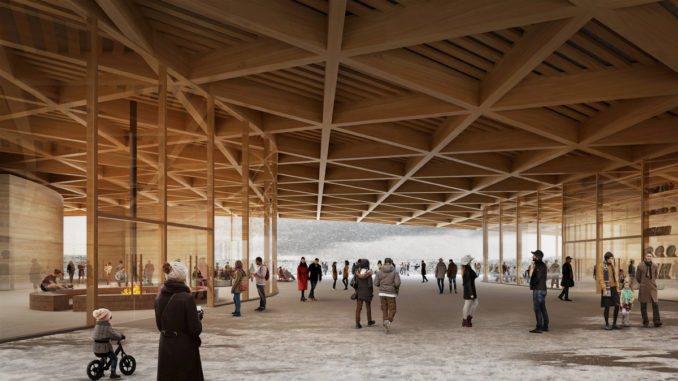
Drawing a continuum between past and present, Snøhetta’s design captures the legacy of T.R., while also making a commitment to the longevity and health of the region. We look forward to refining this vision into a realizable project through participatory workshops and input from community stakeholders. This design process is more than a library; it is about making a place for community, rooted in T.R.’s story and composed of all those who call North Dakota home.
Theodore Roosevelt Presidential Library
Design Team
Snøhetta: Landscape Architect & Architect
Applied Ecological Services: Ecologist
Atelier Ten: Sustainability Consultant
MKA: Civil & Structural Engineering
Arup: Lighting and Acoustics
Morrissey: MEP Engineering
Images and Text: Snøhetta

